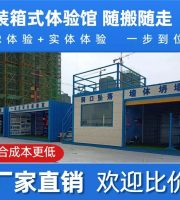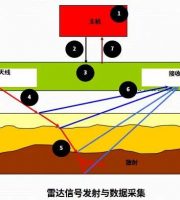1、 The basic structure of pavement subgrade and pavement are the main engineering structures of highway
. 
Subgrade is a geotechnical structure excavated or filled on the natural ground surface according to the design linear (position) and design cross section (geometric dimension) requirements of the route
. 
It is the foundation of the pavement and bears the traffic load from the pavement
. 
Road surface is a layered structure which is paved in layers with various mixtures for vehicles on the top of subgrade
. 
Roadbed: the roadbed within 0.8m below the bottom of pavement structure layer is called roadbed
.
The roadbed is divided into upper roadbed (0-0.3m) and lower roadbed (0.3-0.8m)
.
Upper Embankment: the filling part 0.8-1.5m below the bottom of pavement structure layer is called upper embankment
.
Lower Embankment: the fill below the upper embankment is called the lower embankment
.
The subgrade width of Expressway and first-class highway is generally composed of lane, median and shoulder, as shown in Figure 1-1
.
2、 The subgrade width of class III and IV Highway is generally composed of lane and shoulder, as shown in Figure 1-2
.
[Construction Specification] the lime of Expressway and first-class highway should not be lower than grade II, that of second-class highway should not be lower than grade III, and that of highway below grade II should not be lower than grade III
.
For the base course of high-speed and first-class highway, ground hydrated lime should be used
.
The effective calcium oxide content should be more than 20% and the strength of the mixture should meet the requirements when the extra grade lime is used in the highway below grade II
.
With enough bearing capacity, the vertical force, horizontal force, vibration force and impact force produced by the vehicle are transmitted to the road surface by the wheels, which makes the stress, strain and displacement in the road surface structure
.
If the strength or deformation resistance of the whole or a certain part of the subgrade and pavement structure is insufficient, the pavement will appear fracture, subsidence, wave or rutting and other diseases, which will affect the normal use of the subgrade and pavement
.
[Construction Specification] the coarse aggregate above 4.75mm in the base course of the extremely heavy and extra heavy traffic load grade of high-speed and first-class highway shall be of single particle size
.
During the acceptance of subgrade and pavement, in general, the bearing capacity of flexible materials (such as graded gravel and asphalt concrete) is expressed by deflection, and that of rigid materials (such as cement concrete) and semi-rigid materials (such as inorganic binder stabilized materials) is expressed by strength
.
[Construction Specification] sufficient thickness should be ensured for mixture paving
.
After rolling, the paving thickness of each layer should not be less than 160 mm, and the maximum thickness should not be more than 200 mm
.
The compactness detection during construction shall be based on the maximum dry density determined by the compaction results of daily field sampling, and the compaction test of daily sampling shall meet the following requirements: a compaction test shall not be less than 3 parallel tests, and the maximum dry density difference between each other shall not be greater than 0.02g/cm3; otherwise, the test shall be repeated, and the average value shall be taken as the detection standard of compactness on that day
.
B when the difference between the value and the maximum dry density determined in the design stage is greater than 0.02g/cm3, the reasons should be analyzed and dealt with in time
.
The stability of pavement structure means that the pavement structure can maintain the geometric shape, physical and mechanical properties required by the engineering design under the action of natural factors such as water and temperature
.
The stability of pavement structure mainly includes overall stability, water stability, temperature stability (high temperature stability or low temperature stability), etc
.
The periodic change of air temperature has an important influence on the stability of pavement structure
.
In high temperature season, because of softening, asphalt pavement will produce large deformation under the action of wheel load
.
The cement concrete pavement panel will warp and deform in the high temperature season
.
Under the repeated action of the wheel load, it is easy to produce cracks or break the slab
.
In the cold and freezing season in the north, asphalt pavement, cement concrete pavement and semi-rigid base will produce a large number of shrinkage cracks due to low temperature
.
3
.
Having enough surface smoothness is an important performance that affects driving safety, driving comfort and transportation benefit
.
The uneven road surface will increase the driving resistance and make the vehicle produce additional vibration
.
This kind of vibration will cause bumpy driving and affect the speed and safety of driving, the stability of driving and the comfort of passengers
.
In addition, the uneven road will also accumulate rainwater, accelerating the damage of the road
.
Excellent pavement evenness depends on excellent construction equipment, fine construction technology, strict construction quality control and regular and timely maintenance
.
The acceptance of subgrade and all structural levels of pavement should be carried out
.
4
.
The road surface should be smooth but not smooth with enough anti sliding performance
.
When a car is driving on a smooth road, there is a lack of enough adhesion (friction) between the wheels and the road
.
When the car is driving at high speed in rainy days, when it is suddenly braked or started, climbing or turning, the wheels are prone to idling or slipping, resulting in the decrease of driving speed, the increase of fuel consumption, and even traffic accidents
.
The anti sliding ability of asphalt pavement surface is usually achieved by using hard, wear-resistant and rough coarse aggregate, while for cement concrete pavement, some technological measures (such as grooving) will be adopted
.
5 pavement structure with enough durability under the repeated action of traffic load and cold, hot, dry and wet climate factors, pavement materials will produce aging decay, pavement performance will gradually reduce, resulting in fatigue damage and plastic deformation accumulation, shorten the service life of pavement
.
Therefore, the pavement structure must have sufficient fatigue strength, resistance to aging and resistance to cumulative deformation, so as to maintain or prolong the service life of the pavement
.
In order to improve the durability of the pavement, in addition to careful design, selection of materials and fine construction, it is also very necessary to maintain, repair and restore the road performance frequently and timely
.
6
.
It has the lowest possible dust emission
.
The vacuum suction generated by the back of the car body will suck out the fine particles on the road surface and cause dust, resulting in loose, falling off and potholes on the road surface
.
Road dust will affect the driving sight distance, reduce the driving speed, and bring adverse effects on the environmental health along the line
.
Therefore, it is required that the dust on the road surface should be reduced as much as possible during driving
.
2、 Pavement structure level pavement structure is usually layered, which is divided into several levels according to the use requirements, stress conditions, soil foundation support conditions and the influence degree of natural factors
.
According to the different functions of each layer, the pavement structure layer can be generally divided into surface layer, base layer, subbase layer and cushion layer, as shown in Figure 1-3
.
The surface layer is a structural layer which directly bears the repeated action of wheel load and the influence of natural factors
.
It bears the vertical force, horizontal force and impact force of large traffic load, and is also affected by rain erosion and temperature change
.
Therefore, the surface course should have high structural strength, anti deformation ability, good water stability and temperature stability, and should be wear-resistant and impermeable; its surface should also have good anti sliding and flatness
.
The materials used for constructing the surface course mainly include cement concrete, asphalt concrete, asphalt crushed stone (gravel), gravel (gravel) mixed with soil (or not mixed with soil) mixture and block material, etc
.
See table 1-2 for material types and application scope of pavement surface
.
2
.
The base and subbase mainly bear the vertical force of vehicle load from the surface layer, and spread the force to the underlying cushion and soil foundation
.
When the base is too thick, in order to ensure the quality of the project, it can be divided into two or three layers
.
When using different materials to build the base, the lower layer is the subbase
.
When the subbase is double-layer, it can be called upper subbase and lower subbase respectively.
.





